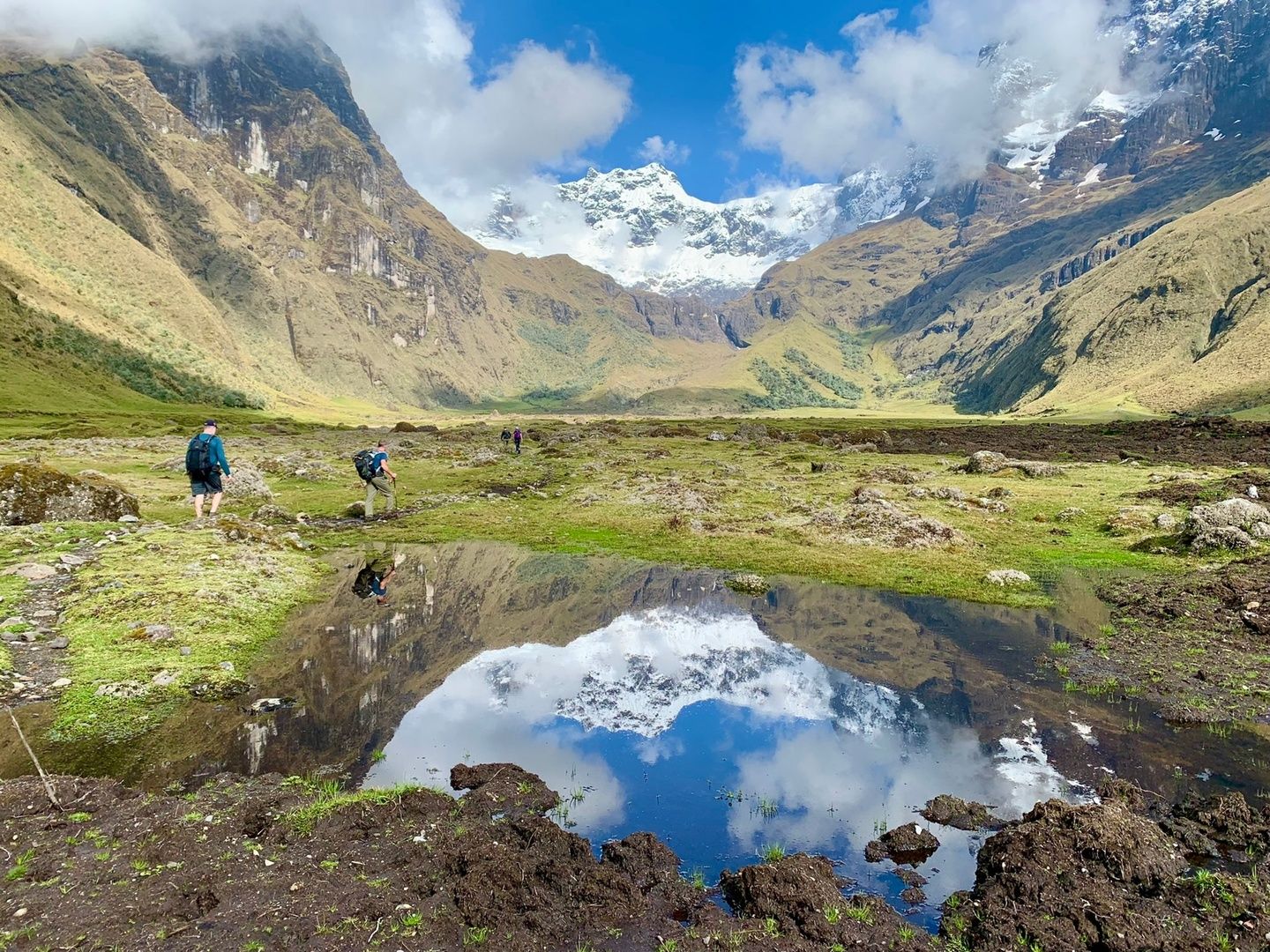Ecuador is renowned for its soaring volcanic peaks, biodiverse Amazon rainforest and the wildlife haven of the Galapagos Islands. According to Quito-based destination expert Henry Sisa, there are plenty of reasons to visit.
“People visiting Ecuador can enjoy a very diverse natural landscape,” he says. “There’s the Galapagos Islands, which is of course the number one highlight - an incredible living laboratory of biology, where you can see how the animals have been shaped. Then we have the coastal region with beautiful white sand beaches, the rainforest and the highlands, with volcanoes permanently covered in snow all year long. They're all so close together.
“In other parts of South America you need long hours of driving or even flights to move from one region to another - in Ecuador it takes two to three hours to move from one region to another.
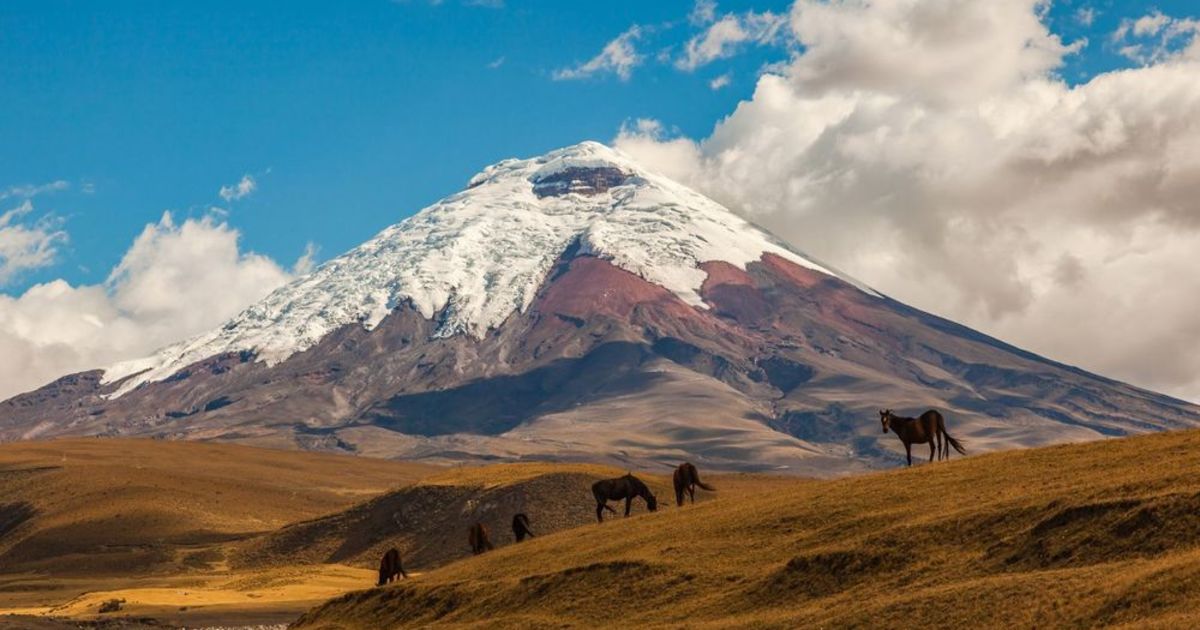
“It’s also a very multicultural country. We have 27 different nationalities with 13 different dialects spoken besides Spanish, which is the mother tongue. In small towns and villages the native people speak different dialects; they have different cuisines, traditions and customs. Travellers can jump into it and experience living with the locals. They can eat what they eat, and see how they live.”
But if you’re thinking about planning a trip to Ecuador - or perhaps you’ve already booked it - then you’re likely to have some questions. Perhaps you’re wondering what vaccinations you need? Maybe you want to know whether to bring cash or a credit card? Or you're curious about the best places in the country to go hiking?
Either way, we’ve got you covered. With Henry’s help, we’ve answered 40 frequently asked questions about Ecuador to help you plan your trip.
Preparing For Your Ecuador Trip - FAQs
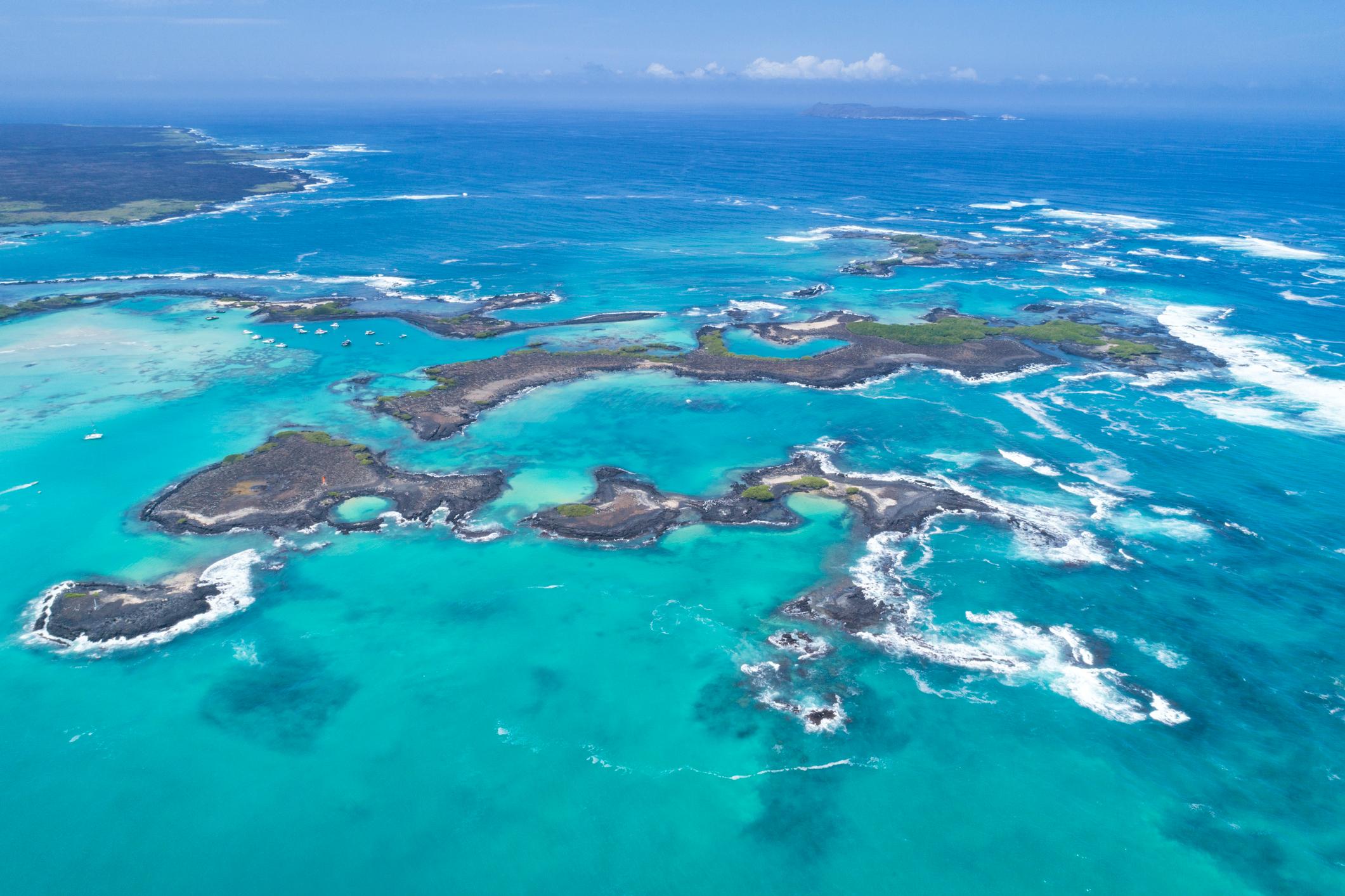
1. What vaccinations are recommended for Ecuador?
When visiting Ecuador, a yellow fever vaccination certificate is required for travellers arriving from - or having transited for more than 12 hours through - Brazil, Democratic Republic of Congo and Uganda. According to the advice of the NHS Fit for Travel website, other vaccines to consider include diphtheria, hepatitis A and B, rabies, tetanus and typhoid.
2. Do I need a visa to visit Ecuador?
U.S. citizens and British nationals do not need a visa to enter Ecuador for short stays of 90 days or less. The same is true for most countries - including those within the E.U. and Schengen area, as well as Australia, Canada and New Zealand - with 40 exceptions. These include India, Egypt and Nigeria. For more information, check out the World Visa Guide’s entry on Ecuador.
3. What is the best way to fly to Quito from the US?
You can fly to Quito directly from six major U.S. cities: Miami; Atlanta; Fort Lauderdale; Houston; New York; and Atlanta. Miami offers the largest number of flights, but as a busy transport hub, New York’s JFK airport is also recommended.
4. What is the best way to get to Quito from the UK?
There are no direct flights to Quito from the UK. You can either fly to another city in North or South America first, or travel via Europe. The shortest flight (14 hour 40 minutes) from London Heathrow is with Iberia airlines, offering a 55 minute layover in Madrid. Other options include travelling from London Heathrow via Miami with American Airlines (15 hours 57 minutes) or via Bogota with Avianca (16 hours 15 minutes).
5. How do I get to the Galapagos from Ecuador?
The Galapagos Islands lie roughly 600 miles (965 km) off the coast of Ecuador, so the two ways to get there are by a plane flight or by boat. Flying is more popular, considering the ferry (from Guayaquil) takes around three days. Nonstop flights from Quito to the Galapagos take around two hours and 15 minutes.
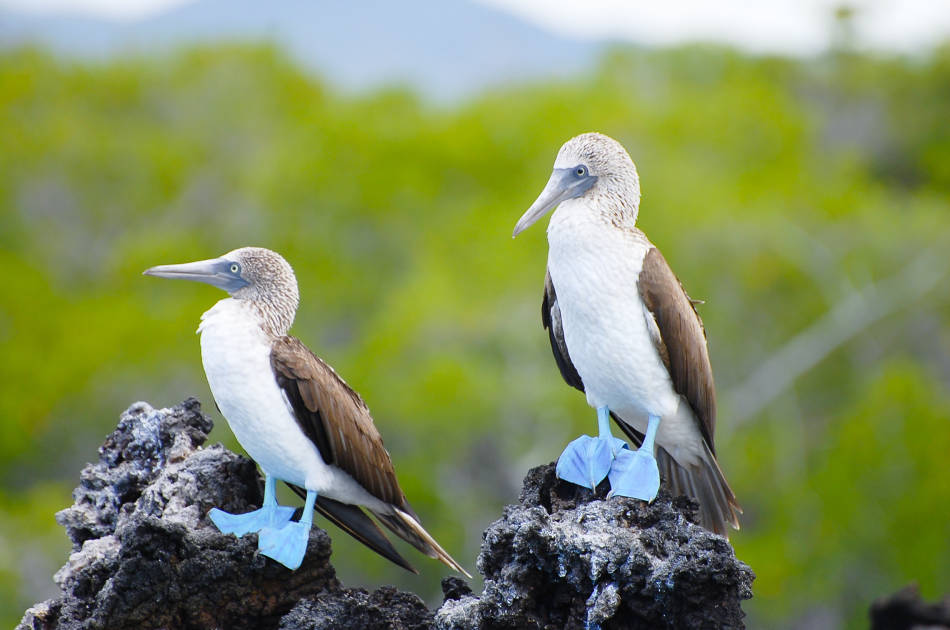
6. What language is spoken in Ecuador?
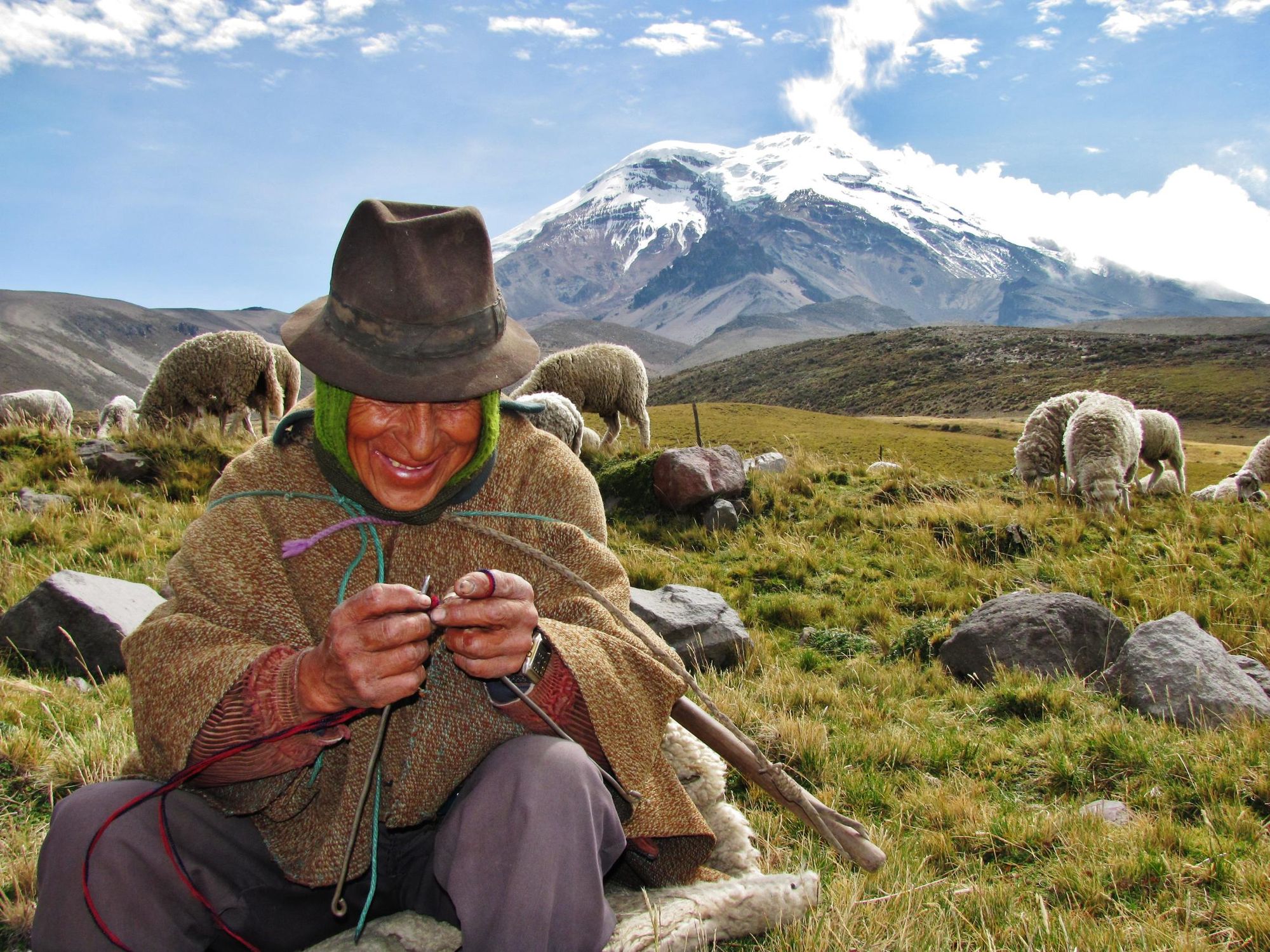
Spanish is the official language of Ecuador, and is spoken by 97% of the population. Additionally, there are 13 other languages spoken in Ecuador - Quichua, a local variant of Quechua, is the second most common language (spoken by 5% of the population).
7. What plug adaptor should I bring to Ecuador?
Type A (the same as the US) and B plug sockets are used in Ecuador. People coming from the UK will need a power plug adapter for sockets type A and type B. Because the voltage in Ecuador (120 V) is much lower than the voltage level in the United Kingdom (230 V), a voltage converter plug will ensure devices keep functioning optimally. Travellers from the US will need a B to A (three to two prong) adapter.
8. What is Ecuador’s national currency?
The official currency of Ecuador is the US dollar, which has been in operation since 2000. However, the country uses its own centavo coins.
9. Are there ATMs in Ecuador or should I bring cash?
There are ATMs, or cashpoints, in virtually every town of Ecuador. Look out for those with a BanRed sign, a safe network allowing local and international withdrawals. Travellers from abroad might look at purchasing a prepaid multi-currency card to avoid transaction fees from their local and Ecuadorian banks. You can also bring US dollars (the Ecuadorian currency) with you into the country, or use several authorised money exchange services. Make sure to bring bills in small denominations - many businesses won’t have change for $50 and $100 notes - and not to carry too much cash on your person.
10. What is the climate like in Ecuador?
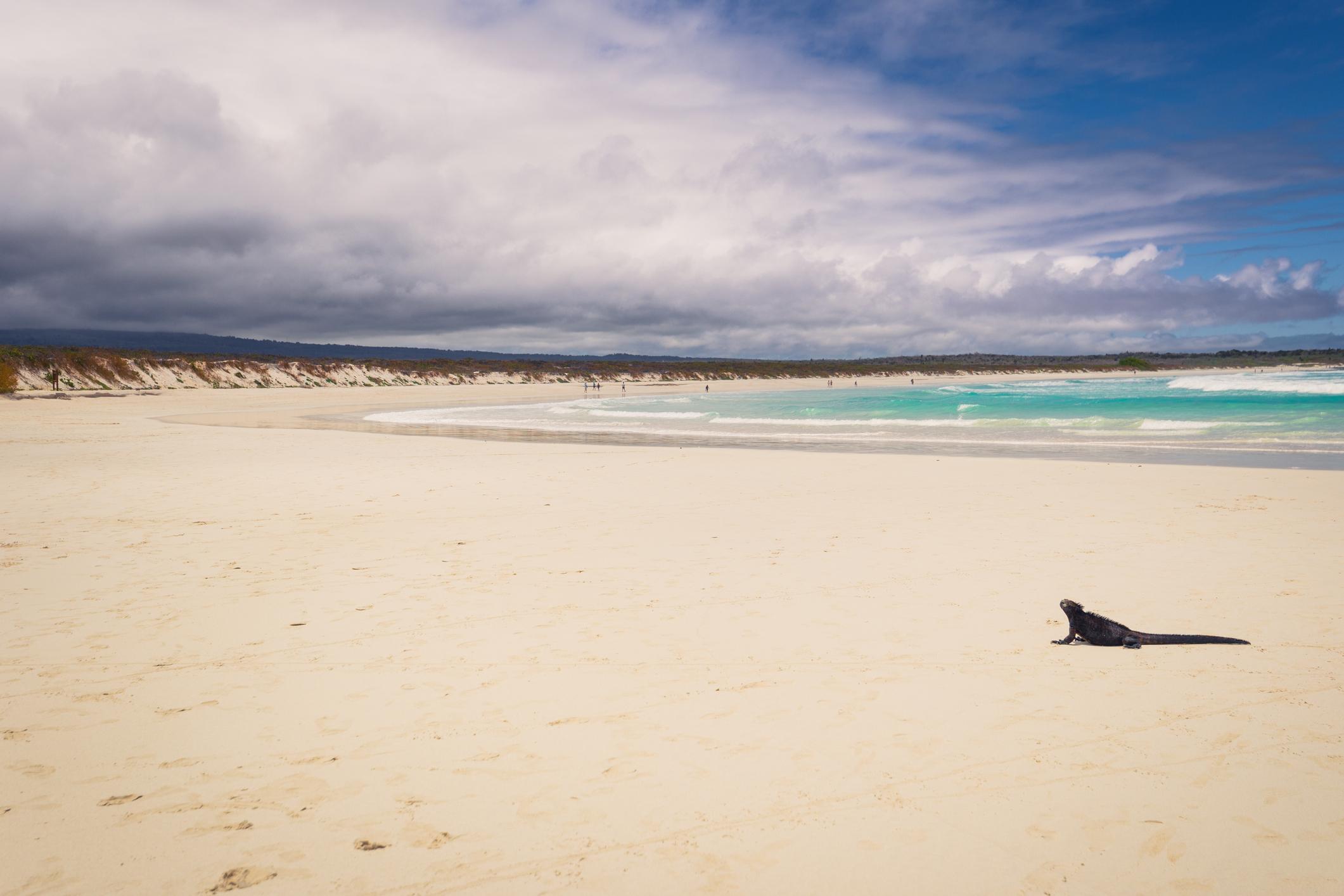
Ecuador is crossed by the equator, meaning there’s little seasonal variation in temperature and the same amount of daylight all year long. There is, however, a rainy season between December and May in the Galapagos and on the coast, October to May in the highlands and June to August (plus December and January) in the Amazon. However, travelling during these periods shouldn’t be avoided - in fact, the Galapagos and coastal Ecuador are considered more pleasant to visit during these periods.
“Rain in Ecuador does not last for a day. Regularly it's showers that last for an hour or an hour and a half, and then the sunshine returns,” Henry explains. “In the Galapagos the rainy season means warm water, which is excellent for snorkelling.”
11. What is the best month to visit Ecuador?
The best time to visit Ecuador for trekking in the Andes and visiting highland cities like Quito is between June to September, and between December to May for lounging on the beaches or visiting the Galapagos. Meanwhile, August to November is one of the best times for visiting the Amazon. However, due to its position on the equator there’s little seasonal variation - Ecuador can be visited year round.
Read more: When to Visit Ecuador: Unmissable Events and Holidays in Ecuador
12. What is the best two week itinerary for Ecuador?
Because Ecuador is a relatively small country - around the size of Colorado - you can experience a wide variety of environments and activities within a short space of time. Tour guide Henry Sisa recommends spending a week on the Galapagos Islands, enjoying the beaches and wildlife watching, and a week on the Ecuadorian mainland enjoying activities such as trekking and whitewater rafting.
As you descend from the high mountains you reach the cloud forest, where all the water comes down from the mountains to the tropics.
“On a two week holiday the Galapagos Islands would be where to focus your attention. I think you need between five to seven days,” he says. “I would spend the next week in different parts of the Ecuadorian mainland, going to our beautiful snow-covered mountains to do some trekking. As you descend from the high mountains you reach the cloud forest, where all the water comes down from the mountains to the tropics. It allows us to do any type of whitewater rafting or canyoning, or going through waterfalls. Then you jump into warmer weather to go into the tropics such as the Chocó Forest lowlands or the Amazon region, where you can explore the jungle and enjoy the wildlife.”

13. Do I need malaria tablets for Ecuador?
In Ecuador, malaria risk is low throughout the year in areas below 1,500 metres of altitude (including the coast). There is considered to be no risk of Malaria in Guayanquil, Quito, other inter-Andean cities and the Galapagos Islands. Anti-malarial tablets are not recommended, but the NHS does recommend taking precautions against mosquito bites in low-risk areas (such as using mosquito nets and repellant).
14. Is Ecuador a safe country to visit?
In January, the Ecuadorian government announced a 60 day state of emergency to clamp down on drug-related crime (largely concentrated on Guayaquil, a large city on the Pacific coast). According to our on the ground reports, airports and road infrastructure are fully operational, and curfew requirements have been relaxed. Read the latest FCDO update for Ecuador or our travel in Ecuador advice to find out more.
According to Henry Sisa, founder of Adventure Journeys, there is a risk of petty crime in the larger cities of Guayaquil and Quito. However, in smaller towns and on the Galapagos Islands, the risk is incredibly low.
“The time you spend in larger cities such as Quito and Guayaquil is when you’ll have more exposure to petty crime and particularly pickpockets, which is generally speaking common in all large Latin America cities - Ecuador is not an exception,” he says. “We advise people not to go walking after dark, and try to grab a taxi in the big cities. We recommend not bringing all your possessions with you - simple things that can actually make a difference.
“But going away from the big cities, you will experience small towns with native people and locals where it's not dangerous at all. The reports of crime in those areas are very low because they continue to implement the old-fashioned rules to punish this type of thing. In the Galapagos there’s very little crime. There's only a population of 32,000 spread across four islands. People can just leave their bikes unlocked on the streets - it's super safe.”
15. What is the current foreign travel advice for Ecuador?
For the most up to date information and advice for travel to Ecuador, check either the Foreign, Commonwealth & Development Office (FCDO) website for UK citizens, or the US Department of State’s foreign travel advisory website.
Upon-Arrival FAQs
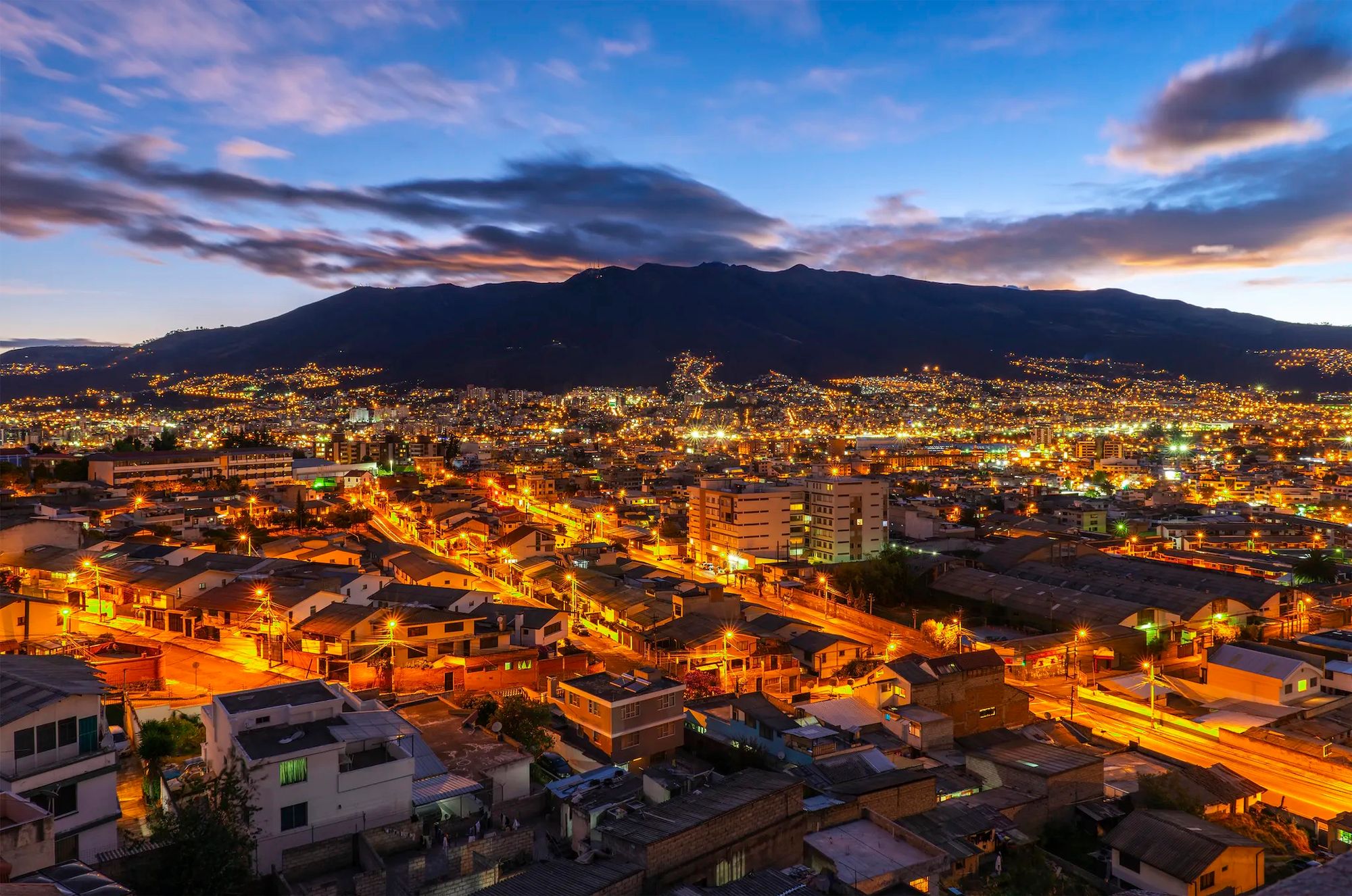
16. How long should I acclimatise in Quito before continuing on my travels?
Quito is located at an altitude of 2,850 metres above sea level, so chances are you’ve flown in from a lower altitude and should spend at least 24 to 48 hours here acclimatising before continuing on your journey - longer, if your itinerary permits.
“There is medicine to help people acclimate to high altitude,” Henry explains. “However, what really helps is to spend at least 24 hours at altitude. So we recommend that you take your first day in Quito super easy, doing very little because you might experience a little bit of altitude sickness. The only way to beat it is to stay calm, drink lots of water and we also recommend you eat dark chocolate - sweets keep your energy going. Acclimatising in Quito will help you on high-altitude trekking trips, because your body will have had longer to adapt.”
Read more: How Will High Altitude Affect Me on My Hike?
17. What is the best way to travel around the Galapagos?
The best way to travel between islands is to take the daily services on small speedboats (known as ferries) between Santa Cruz and San Cristóbal, Isabela, and Floreana. These routes take between two to three hours and cost between $30 to $35 (£23.50 to £27.40). An expensive but more convenient option is to take a flight on a small eight seater plane, which run between San Cristóbal, Baltra, and Isabela.
There are no car rental services on the Galapagos - traffic is minimal. You can get around by walking, hiring a bike or taking a taxi (pick-up trucks known as camionetas). There are little to no public bus services. If you travel on an organised tour, transport between and around the different islands will be arranged for you.

18. What is the best way to travel around Ecuador?
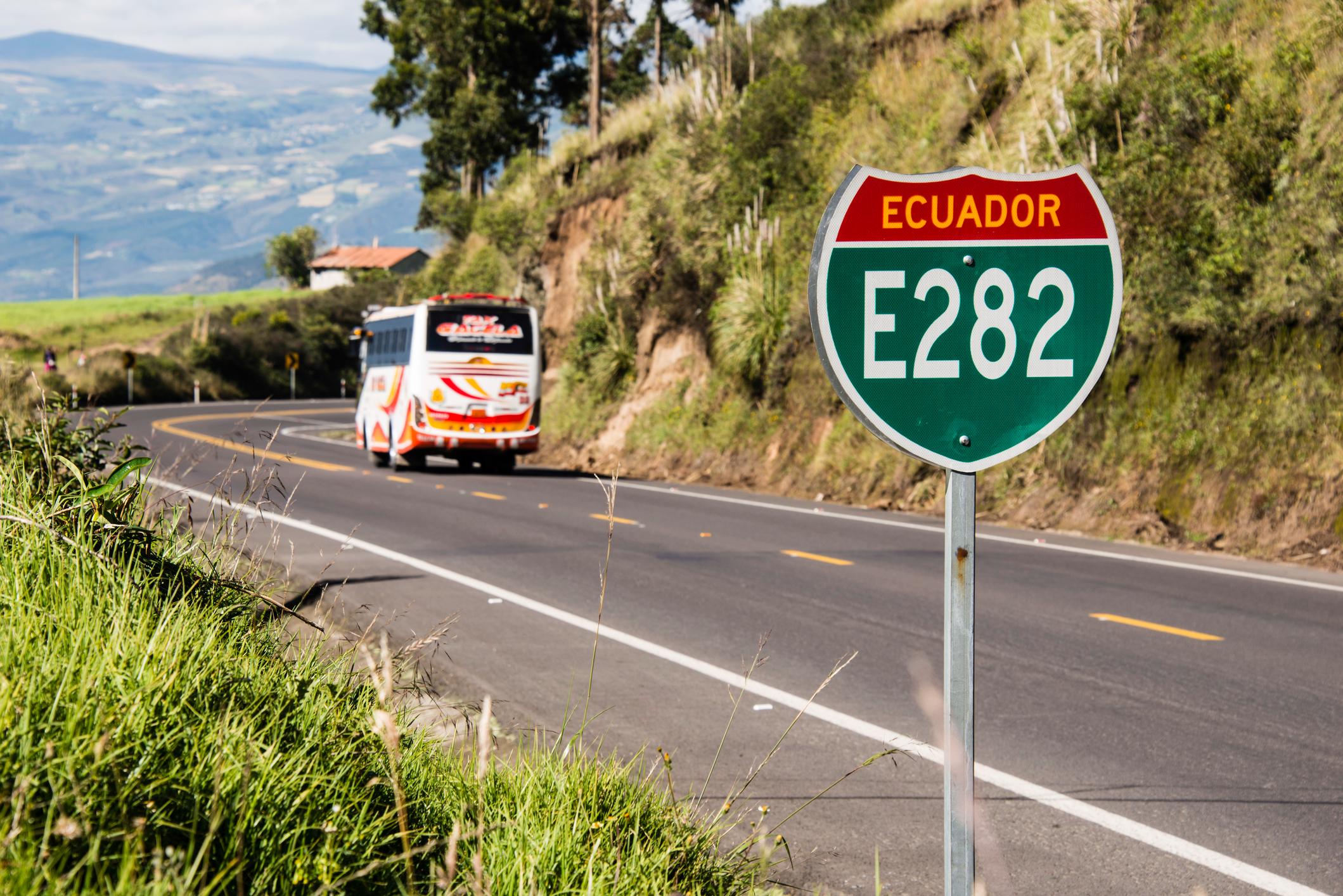
Ecuador has an extensive and affordable network of buses running between and around its cities. These range from characterful local buses to air-conditioned coaches. We recommend Ecuador Hop, a hop-on-hop-off service that takes you to some of the most picturesque locations in the country, from Cotopaxi to Quilotoa. Hiring a car or a 4WD is also popular, as it gives you greater freedom - driving down the Pan American Highway is a popular road trip itinerary. Domestic flights between the larger towns and cities (such as Cuenca, Guayaquil and Ecuador) are a popular option for those with limited time.
19. How much do I tip, and whom?
We recommend tipping your guide around $10 a day (more on the Galapagos) and any support staff on your trip around $5. Tip porters and hotel staff between 50 centavos and $1. Taxi drivers do not expect tips. In many Ecuadorian restaurants, service is included. When this is not the case (in cheaper establishments) a 10% tip is recommended.
Read more: The Adventurer's Guide to Tipping Around the World
20. Is the water safe to drink in Ecuador?
Tap water in Ecuador is not safe to drink. However, eco-friendly accommodation in Ecuador should offer purified water (through filtering or boiling), so make sure you bring reusable drinking bottles to stock up for the day.
21. Is there any suitable food for vegetarians and vegans in Ecuador?
Although a lot of dishes contain meat and fish in Ecuador, there are plenty of options for vegetarians. These include llapingachos, thick potato pancakes stuffed with cheese, and mote pillo, scrambled eggs with hominy corn. In the mountains, rice with beans, avocado and choclo ( a type of corn) is suitable for vegans and vegetarians. You’ll find that in large cities, street food vendors and restaurants are aware of, and can cater to, plant-based diets. In very rural areas, vegetarian and vegan diets are less well known, so it’s best to learn a few Spanish phrases to explain. “No puedo comer carne ni pollo ni pescado” means “I don’t eat (red) meat or chicken or fish.”
The ecosystems of Ecuador change every 200 metres of altitude. Each area has different products, and because we have no seasons they are available all year long.
“We have so many vegetables here,” Henry says. “The ecosystems of Ecuador change every 200 metres of altitude. Each area has different products, and because we have no seasons they are available all year long. So there is plantain, potatoes, maize, yucca, and manioc. We're not very expert on salads. However quinoa, and other legumes - plus the big variety of vegetables that we have - can always be part of a meal avoiding either dairy products or meat. Our guides can easily prepare a quinoa soup or a vegetable cake, or rice and beans, which everyone loves.”
22. What Ecuadorian foods can people who are gluten-free eat?
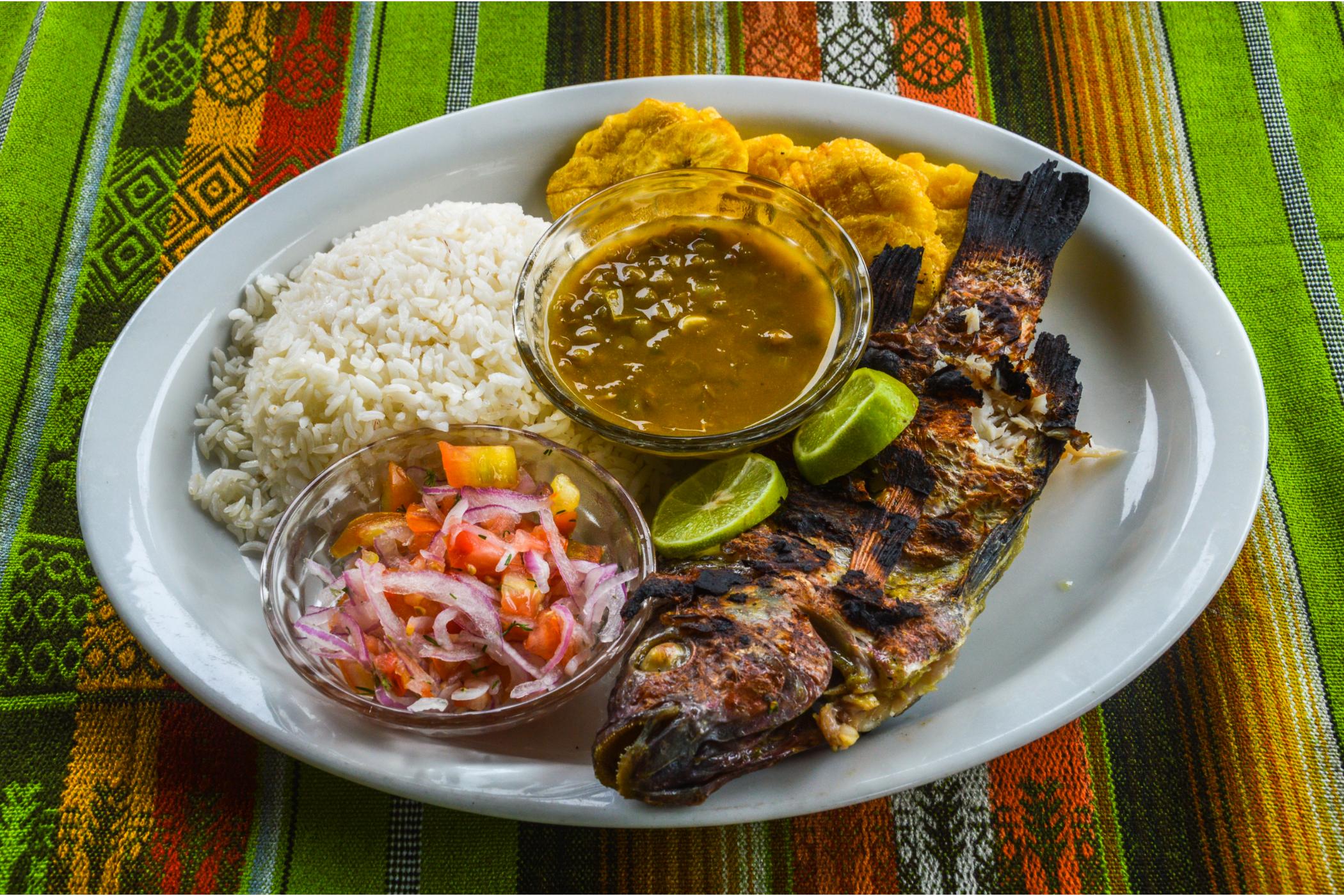
Ecuador is a very gluten-free friendly country. Many breads and dishes use gluten-free cereals and starches, such as different types of corn, quinoa, cassava and plantains. However, soy sauce and beer is sometimes used in marinades, so make sure you ask whether these ingredients are present in food. Try freshly made arepas (corn flour cakes stuffed with a filling) or pan de yuca (yucca bread) for your carb fix.
23. What are the best beaches to visit in Ecuador?
Many of Ecuador’s best beaches can be found on the Galapagos Islands. We like Tortuga Bay, one of the islands’ largest white sand beaches, and Garrapatero Beach, where you’ll share the sand with wildlife such as sea lions.
On the mainland, jungle-fringed Mompiche is a more peaceful and picturesque alternative to surfer’s paradise Montañita, with some beginner-friendly waves. Meanwhile, Playa Los Frailes in Machalilla National Park is an off-the-beaten-track inlet surrounded by cliffs carpeted with foliage.

24. What are the best things to do in Ecuador?
There are so many things to do in Ecuador you'll be spoilt for choice. Spend a little time exploring the capital, Quito - it's a UNESCO heritage site due to its well preserved historic centre. We highly recommend adventurous types do some trekking - options include the Quilotoa Loop, guided treks through the Amazon or even climbing one of the country's volcanoes. Then, of course, there's the Galapagos Islands - an ideal spot for beach-lounging and wildlife watching.
The small town of Baños is the second most visited place after Quito and is known as the 'Adventure Capital of Ecuador'. Located between the Andes and the rainforest, it offers opportunities for jungle trekking, mountain climbing and scrambling, paragliding and even bridge jumping.
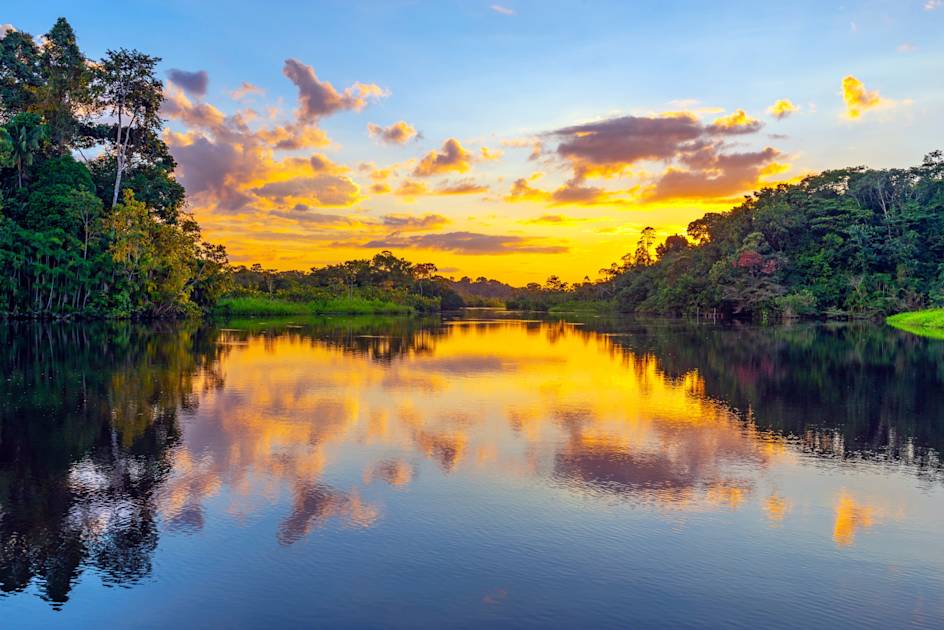
25. What is Ecuador Famous For?
Ecuador is famous for the Galapagos Islands - the large number of endemic species living there inspired Charles Darwin's theory of evolution. It's also famous for its capital, Quito, the capital city with the second-highest elevation in the world (2,850m) - it's also one of the best preserved colonial cities in South America. Despite the name, the Panama hat also originated in Ecuador. Oh, and it's the world's largest exporter of bananas.
Read more: How the Galapagos Islands Inspired Charles Darwin's Theory of Evolution
Adventure Travel in Ecuador FAQs
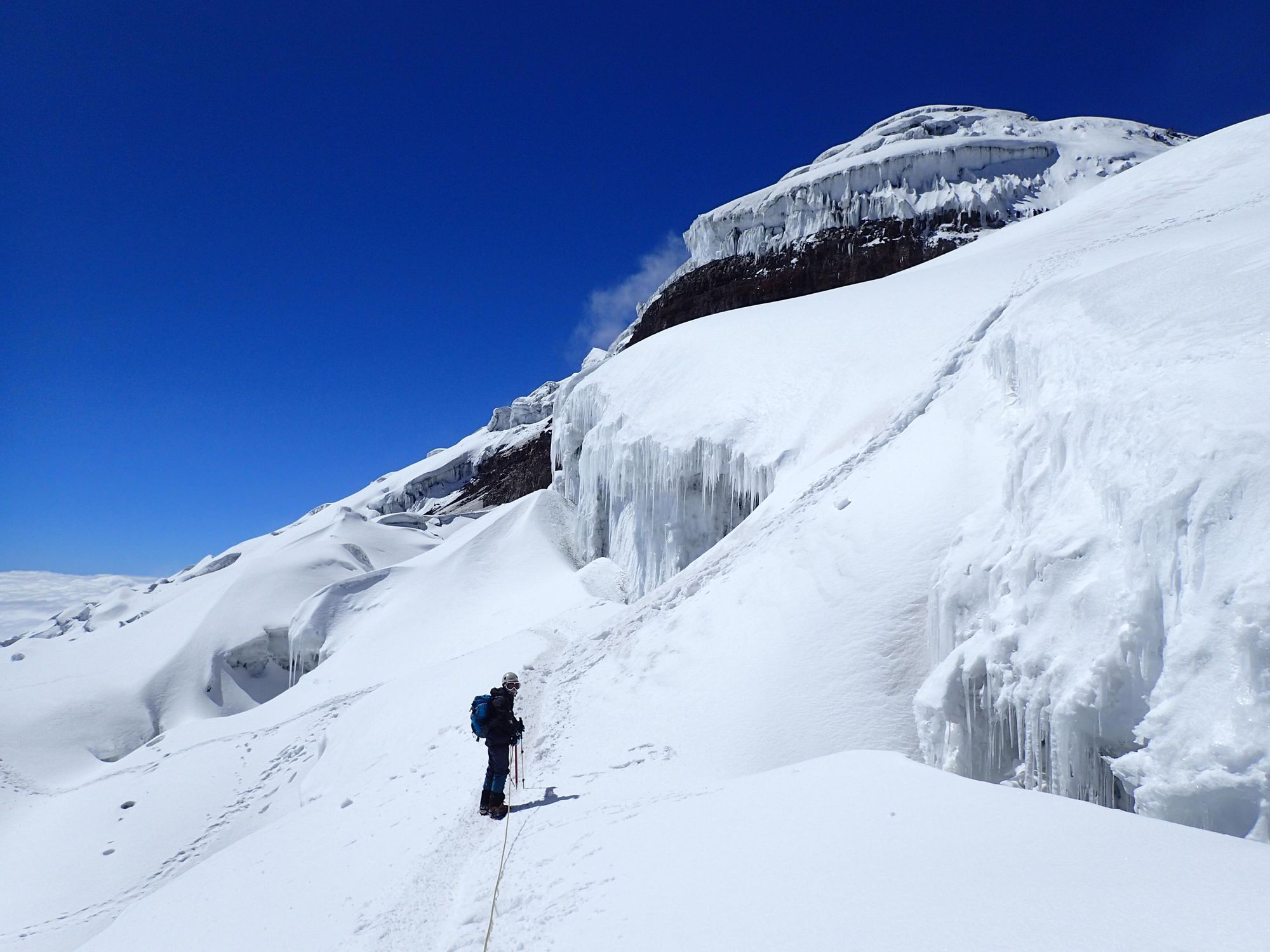
26. What do I need to pack for trekking Cotopaxi, or Ecuador’s other high-altitude volcanoes?
You’ll need worn-in hiking boots and warm clothes, such as fleece leggings and a down jacket (it gets cold at high altitude). You’ll also need waterproofs, and we recommend gaiters to help keep any snow out of your boots. Depending on whether you’re trekking independently or in a group, you might need to bring camping gear - make sure your sleeping bag is suitable for temperatures up to -10℃. For a full kit list, please contact your trip provider or check out the kit list section of our volcano trekking trip in Ecuador.
Read more: Packing for Hiking: 35 Hiking Essentials
27. How can I prepare for high-altitude trekking in Ecuador?
Volcano trekking in Ecuador requires a high degree of fitness, especially the more challenging climbs such as Cotopaxi (5897m) and Cayambe (5790m). Prepare for a multi-day trek with a programme of strength and endurance training - we’d strongly recommend incorporating some summit hikes closer to home into this. It’s hard to prepare for high altitude in advance - the best thing to do is make sure you spend enough time acclimatising. Make sure you choose a hiking trip with a reputable operator, who will build in acclimatisation hikes and has slow ascent profiles.
Read more: How Will High Altitude Affect Me On My Hike?
28. Are there places to leave my excess luggage while trekking?
One of the benefits of booking an organised trekking trip is that there should be provision to leave your excess luggage at your Quito accommodation - you will then be able to pick it up on your return journey. If you’re travelling independently, check out stasher.com. At the time of writing there were three luggage stash points listed, each for $4.99 per day.
29. Is Cotopaxi currently open for climbing?
Yes. Following to increased volcanic activity in late 2022, Cotopaxi's summit was closed for over a year, due to unsafe levels of gas emissions coming from the crater (Cotopaxi National Park remained open to visitors during this time). However, the summit was re-opened in March 2024 and many climbers have successfully summited since. In the event of volcanic activity, there are other volcanoes you can climb instead: a popular alternative is Cayambe, which at 5790 metres high is just 107 metres lower than Cotopaxi.
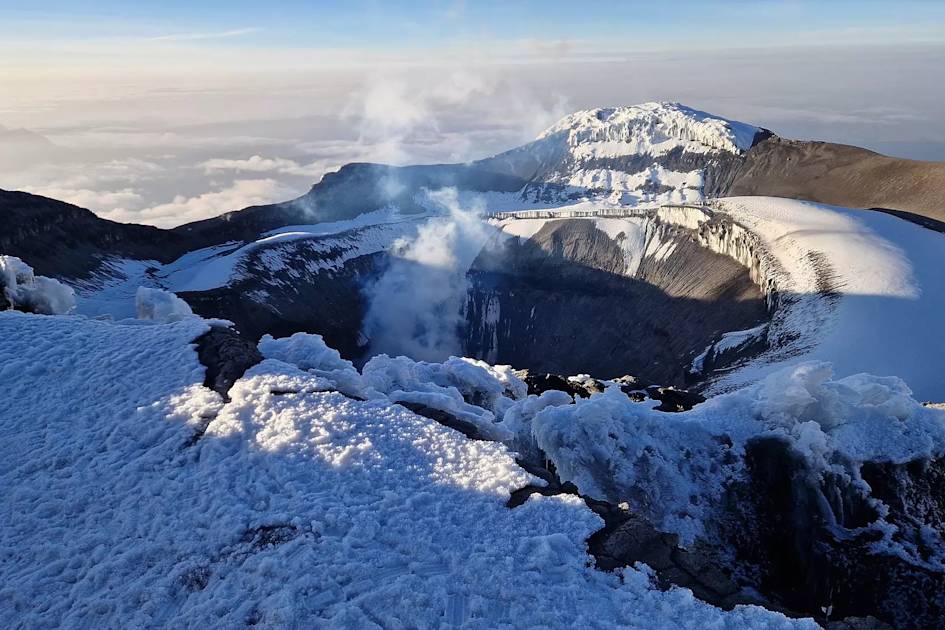
30. Can I climb Ecuador’s volcanoes independently?
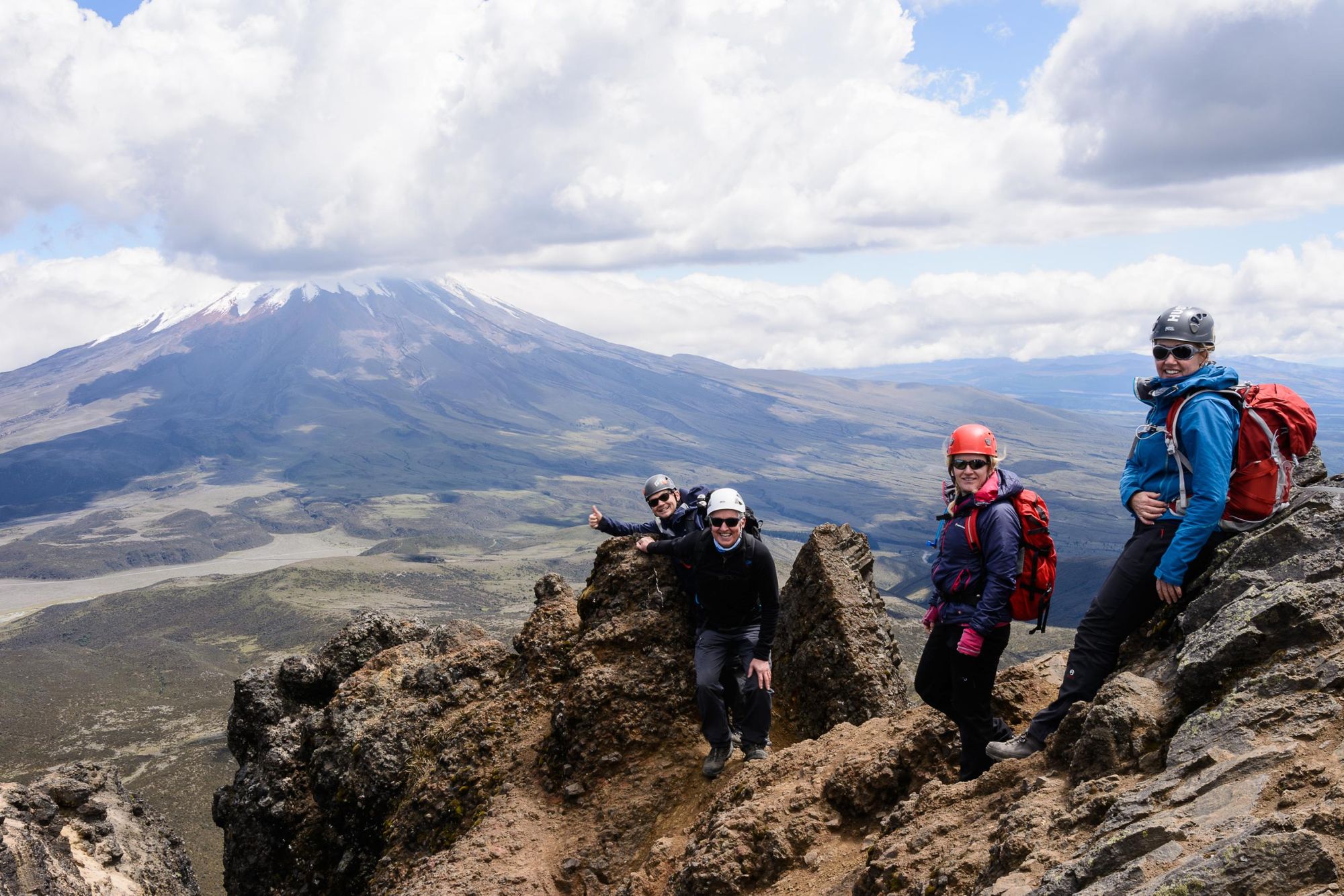
According to Ecuador’s Environment Ministry, it is illegal to climb a glaciated peak (one over 5000m) without a guide. In practice, there have been reports of unmanned ranger stations and people circumnavigating this requirement by showing summit records and climbing qualifications. However, why risk your own safety? Mountain environments are unpredictable, and local guides will have expert knowledge of the terrain.
We would always recommend travelling with a guide on peaks over and under 5000 metres - for example, Rumiñahui (4600 metres) involves short sections of scrambling best undertaken with guidance. Make sure your guide is certified by IFMGA or ASEGUIM, as there are uncertified guides in operation (you should be able to tell via disparities in price, but ask for evidence of qualifications if in doubt).

31. Is trekking in Ecuador safe?
Trekking in Ecuador’s high mountains is well-regulated. A guide is required for any peak over 5,000 metres. Many of Ecuador’s mountains are volcanic, but expert Henry Sisa reassures us that volcanic activity is very well monitored.
“The national parks have their own regulations and any of the guided trips are following all of the regulations,” he says. “Most of the volcanoes, especially the active ones, are monitored all the time. They’re closed when a little bit of activity is reported, as is the case with Cotopaxi summit. In terms of the trekking trails connecting one town to another, that’s completely safe. We’ve never had any reports of somebody jumping out and taking your belongings.”
32. Where is the best place to go trekking in Ecuador?
There are plenty of trekking options in Ecuador, from the Andean Mountains to the Amazon Rainforest. Top of the list is the Avenue of Volcanoes, a 200-mile section of the Andean spine running down Ecuador - guided hikes tend to take you down the more accessible and picturesque sections to summit volcanoes such as Cayambe (5790m) and Pasochoa (4200m).
There are also some decent lower-altitude treks in the Andean foothills, such as the popular Quilotoa Loop. To explore the Amazon, take a hike in Yasuní National Park with an indigenous Huaorani guide, who can lead you deep into the jungle to see animal clay licks and spot medicinal plants.

Read more: Hiking in Ecuador: 6 of the Best Trekking Routes
33. What should I pack for a trip to the Galapagos?
Pack your swimming costume if you head to the Galapagos - there are so many beaches and watersports activities on offer you’ll definitely need them. Bring well worn hiking boots or shoes if you fancy going on some treks, and light waterproofs (there are short and sudden downpours in the rainy season). Our Island Hopping in the Galapagos adventure provides a full kit list.
34. What animals live on the Galapagos Islands?

The Galapagos Islands are known for their large number of endemic species, which includes the Galapagos giant tortoise, the Galapagos penguin, the Galapagos iguana and the famous Darwin’s finches. Alongside endemic species, you might also catch sight of blue-footed boobies (seabirds with electric blue legs and feet), and frigatebirds, known for their dramatic red inflatable throat pouches.
Read more: A Wildlife Guide to the Galapagos Islands
35. What activities should I do on the Galapagos Islands?
There are a lot of land and water based things to do on the Galapagos Islands, many of which offer ample opportunities for wildlife watching. On Santa Cruz, visit the El Chato Tortoise Reserve to see these remarkable creatures in their natural habitat, cycle through Cerro Nature Reserve or visit Tortuga Bay to swim and snorkel.
Read more: The best things to do in the Galapagos Islands
On Isabela, hike the otherworldly Sierra Negra Volcano, or snorkel at Concha la Perla, a natural pool in a mangrove forest. We also recommend a boat trip to Islote las Tintoreras, a chain of uninhabited islets populated by blue footed boobies, Galapagos penguins and sea lions. Go snorkelling in the surrounding waters to see marine iguanas, manta rays and the white-tipped reef sharks the islands are known for.

36. How do I get to the Amazon rainforest in Ecuador?
To reach the Amazon Rainforest in Ecuador, you need to head to the gateway town of Puerto Francisco de Orellana, known colloquially as El Coca, on the Napo River. On one side of the river lies Yasuní National Park, and on the other, Cuyabeno Nature Reserve. El Coca is 184 miles (297 kilometres) from Quito, a drive which takes around 6 hours by car and 8-10 on the bus. It can also be reached via a short 40-minute plane ride from Quito.
Read more: Welcome to Yasuní: One of the Most Biodiverse Places on the Planet

37. What do I need to pack for a trip to the Ecuadorian Amazon?
For a trip to the Ecuadorian Amazon, you’ll need to pack mosquito repellant, sun cream and your sunhat. But you should also be prepared for rain - pack lightweight waterproofs and clothing. If you’ll be on an expedition for a few days, a power bank or solar charger is advisable. You’ll need sturdy waterproof footwear too; either broken-in walking boots or wellies (gumboots).
38. Where are the best hot springs to visit in Ecuador?
Thanks to a high level of volcanic activity, there are some gorgeous natural hot springs in Ecuador - perfect for soothing aching muscles after a hike. We recommend Papallacta Hot Springs (Termas de Papallacta) in Cayambe Coca National Park, and the well-known hot springs of Baños.
39. Where are the best places to go kayaking or canoeing in Ecuador?
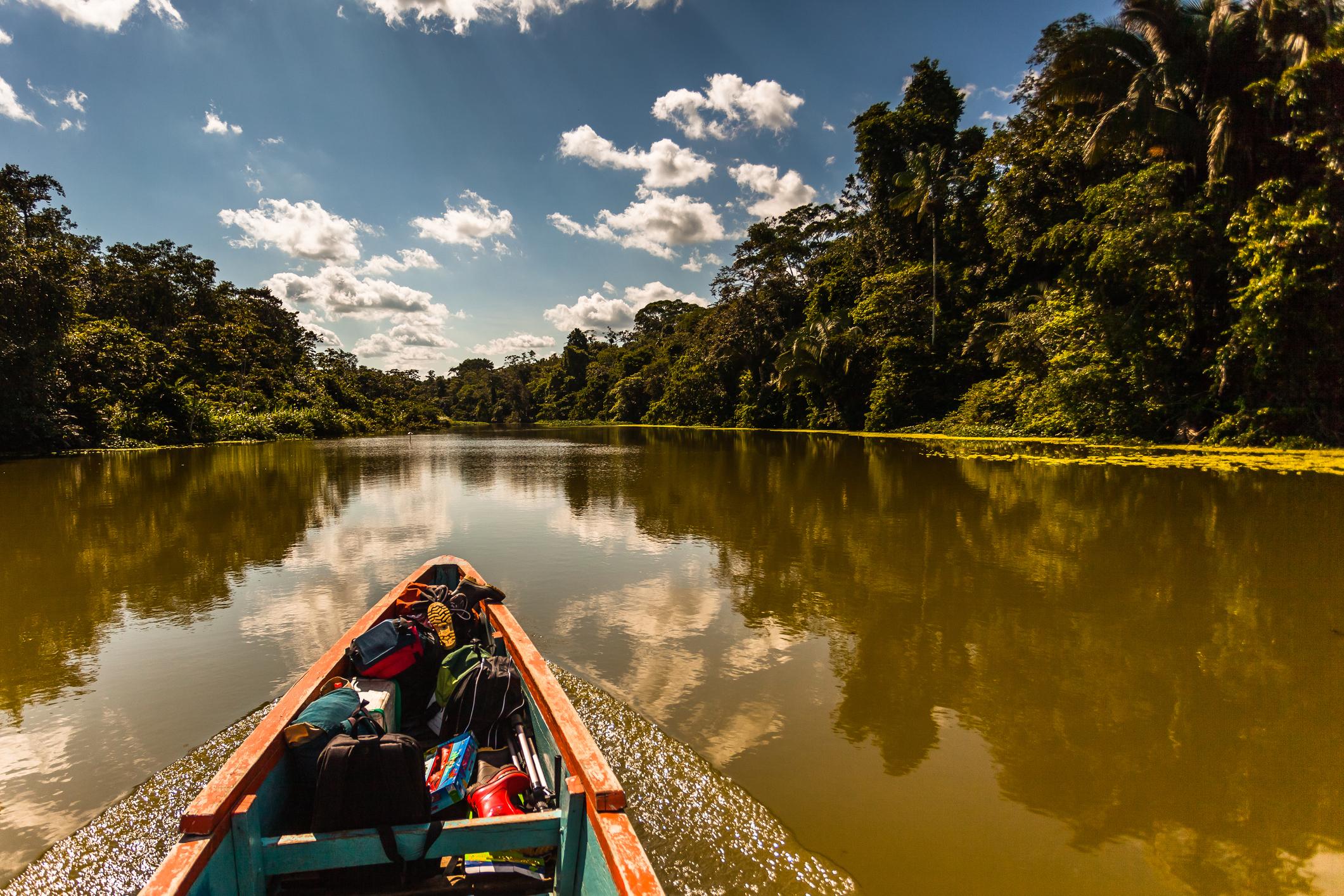
For the truly intrepid, we recommend canoeing down the Shiripuno River into Yasuní National Park - it’s in the Amazon Rainforest and is one of the most biodiverse places on earth. If you’re looking for a short taster session, check out kayak rental on Quilotoa Lake, a volcanic crater lake where you can sometimes see steam rise from the water.
The Galapagos Islands is another good place for paddling; one good option is the coastline around Cerro Brujo on San Cristobal - a picturesque beach where sea lions play in the shallows and iguanas sun themselves on volcanic rocks.

40. Which of Ecuador’s national parks should I visit?
There are 11 national parks in Ecuador, all very different in terms of scenery, climate and wildlife. Top of the list is the Galapagos National Park, a series of volcanic islands renowned for its charismatic endemic wildlife and its stunning white sand beaches. We also recommend Cotopaxi National Park, an area of Andean highlands encompassing lakes, forest, grassland and volcanoes, including 5897-metre-high Cotopaxi. Our third choice is Yasuní National Park, an area of the Ecuadorian Amazon - it’s said to be the most biodiverse place on earth.
Inspired? Check out our epic Adventures in Ecuador, which take you from the Andes to the Amazon rainforest.


